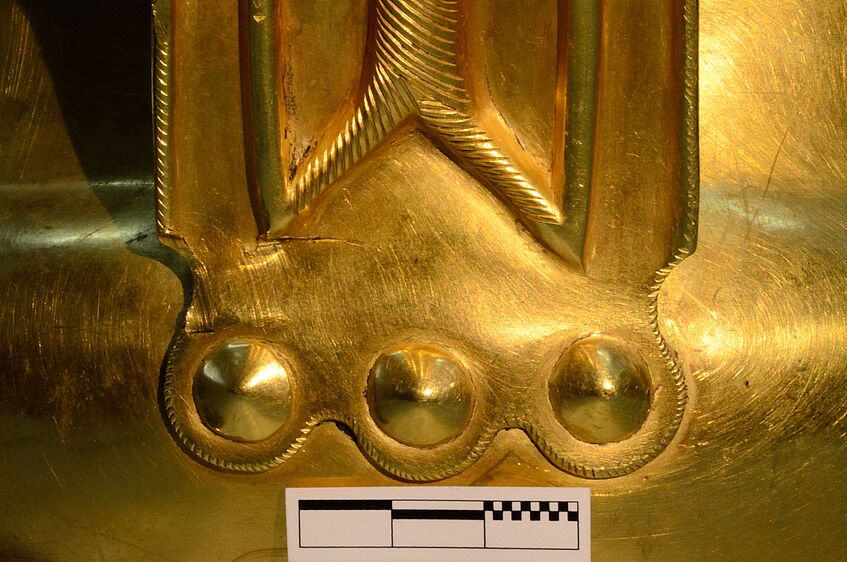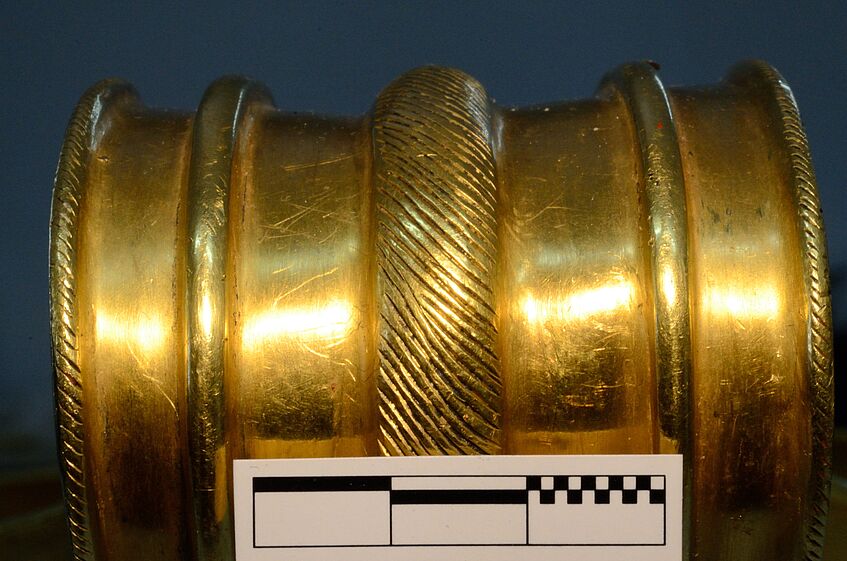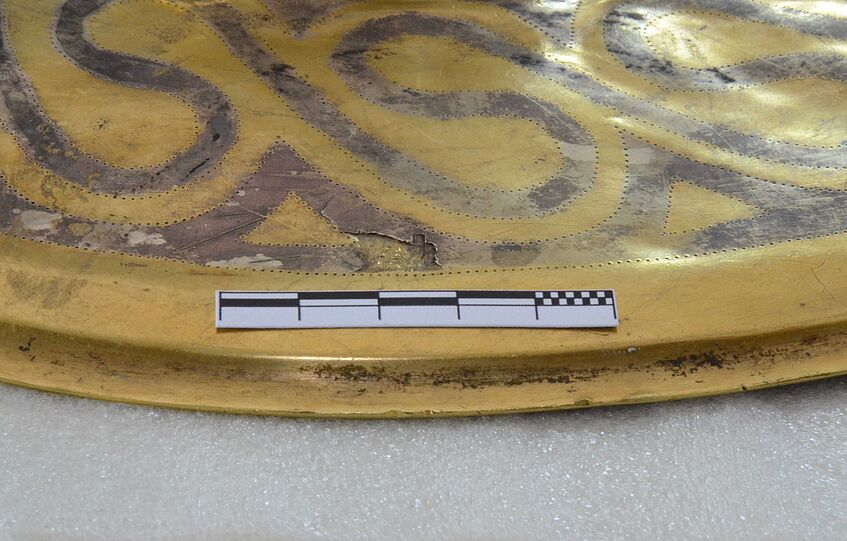The Treasure of Vălčitrăn: Production Technique and Toreutics
The Treasure of Vălčitrăn: Production Technique and Toreutics
Introduction
As part of this cooperation, analyses on gold working on the hoard of Vălčitrăn are carried out together with Petia Penkova and Dr. Hristo Popov, NAIM-BAS. This research is embedded in an ongoing FWF project (Pr. Nr. Projekt P 23619, see detailed info in the info box) on Late Bronze Age mining on the Ada Tepe, BG. The gold treasure represents one of the largest ensembles of gold objects from the Bronze Age Europe and includes, in its present state, 13 objects with a total weight of about 12.4 kg. Its archaeological interpretation and classification are hitherto a much-debated topic. Technological investigations in this context can make a valuable contribution to the clarification of cultural-historical issues. The aim of such studies is the description of a complete object biography, from the raw material to the processing to the finished product to use and depositing. These detailed technological analyses provide not only information about the technical structure of an object, but also about its specific material qualities. Furthermore, the tracks documented on different objects can then be compared and correlated with each other. Based on these typological criteria, for example, individual workshop groups, production centers and technology transfer between different regions can be worked out.

Kantharos, detail of the attachment of a handle, NAIM-BAS, Sofia. (Photo: M. Mehofer, after Penkova / Mehofer 2016)
Results
The ongoing investigations already allow some conclusions. Thus, different working techniques could be observed on the individual objects of the treasure trove: casting, hammering, chasing, soldering and damascening. Based on the results of the investigation, three technological groups can be described, which can be distiguished by different techniques. The first one is formed by the Kantharos, together with the one-armed vessel and the subgroup of the three small handles (kyathoi). The second group are the lids, with their bronze interior construction as their common technological feature. The triplet vessel, which is the only artefact with soldering, forms the third "group". All objects show traces of hammering and chasing, suggesting that they belong to the same technological cycle. Nevertheless, a consideration of the respective decorative concept shows us some differences: In addition to the objects made entirely of a gold alloy, there are objects in which two metals were combined to exploit their different color effects. In the case of the lids, there are flat silver strips incorporated into the gold alloy; at the triple vessel, however, the handle is cast from electrum.
In summary, it can be seen from the current state of research that a defined number of techniques were used in the production of these extraordinary objects. The techniques of precious metal casting, bronze casting and damascening show that the manufacturers were very experienced craftsmen. They not only mastered the melting of large amounts of gold, but also cast large objects with a relatively thin wall thickness of a few millimeters. The fact that no blowholes, gas bubbles or other casting defects can be observed on the cast objects, testifies to the high craftsmanship of the metal casters. They could probably rely on empirically acquired metallurgical knowledge of non-ferrous and precious metal casting, which had been gained over long periods of time.

Kantharos, detail of a handle shows irregular ornaments, NIAM-BAS, Sofia. (Photo: M. Mehofer, after Penkova / Mehofer 2016)

Lid, detail of silver inlay, NAIM-BAS, Sofia. (Photo: M. Mehofer, after Penkova / Mehofer 2016)
To the project homepage: Bronze Age Gold Road of the Balkans – Ada Tepe Mining
Literature
Cooperationpartners
· Prof. Hristo Popov, Dr. Krassimir Nikov (National Institute of Archaeology with Museum at the Bulgarian Academy of Sciences)
· Prof. Zdravko Tsintzov (Institute of Mineralogy and Crystallography, Bulgarian Academy of Sciences)
· Prof. Ernst Pernicka (CEZ Laboratories Mannheim)
· Dr. Elena Marinova (Catholic University of Leuven)
· Prof. emer. Albrecht Jockenhövel (Westfälische Wilhelms-Universität Münster)
